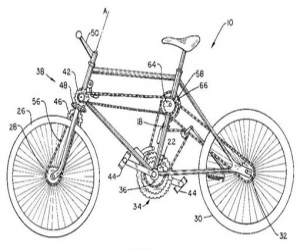


Rs 81 only/-
Mechanical Engineering Solutions in Delhi
8870622331 mech.work.forcedelhi@gmail.com
ABSTRACT
Bicycles have traditionally operated as a single-wheel drive vehicle. As is evidenced by their popularity, single wheel-drive bicycles are suitable in most cases. Because they only employ single-wheel drive, however, the use of bicycles are, for the most part, somewhat limited to prepared surfaces such as paved streets, sidewalks, and groomed paths. Although just about everyone who has ever ridden a bicycle has ridden on gravel or unprepared surfaces, all riders know that it is more difficult to ride on these types of surfaces due to the fact that drive is being generated by only the rear wheel. In any event, single-wheel-drive bicycles are the norm because of difficulties involved in transferring to the front wheel the drive generated by the rider. The difficulty in generating drive via the front wheel of a bicycle results from the need to allow the fork (on which the front wheel is mounted) freedom to turn substantially in either direction from the centre position in order to permit the cyclist to steer the bicycle. Because the fork must be free to turn, it is not possible to directly connect the pedals to the front wheel. While two-wheel-drive bicycles have been proposed, there remains need for an easily-operable and readily steer able two-wheel-drive bicycle, so that riders will have greater opportunity for enjoyable cycling on off-road trails and other unprepared surfaces. Therefore, a two-wheel-drive bicycle overcoming various problems and shortcomings of the prior art would be an important improvement in the art.
Conclusion
| Doc | Complete Document |